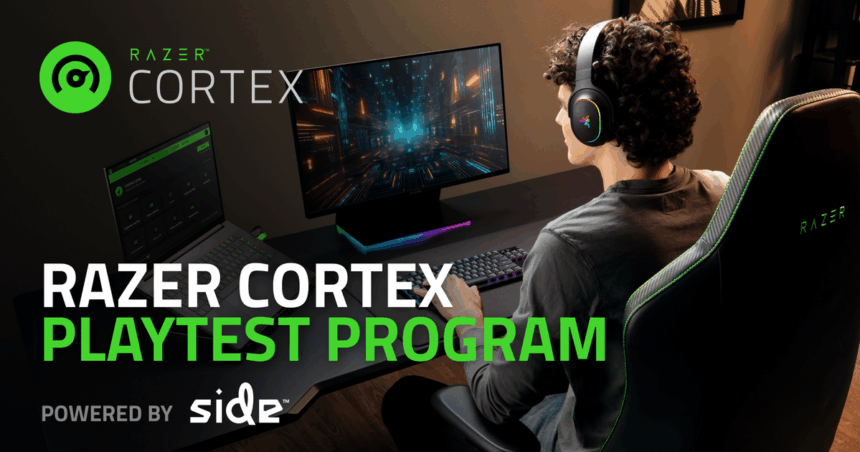Video game services provider Side and technology and hardware firm Razer have teamed up to launch a playtesting solution that can scale to more than 100,000 players.
Dubbed ‘Razer Cortex: Playtest Program – Powered by Side’, the new technology sits within the Razer Cortex launcher, which provides access to games from different platforms like Steam and the Epic Games Store, as well as offering functionality such as video capture.
By clicking on the ‘Playtest’ tab within Cortex, users can now become playtesters for various games. To sign up, players have to agree to a set of binding NDAs, then they are allowed access to a build of a work in progress title.
Cortex tracks playtime and performance data, and players can submit reports that log the things they like and dislike about the game, as well as reporting bugs.
Players are incentivized to sign up to the playtesting program by receiving Razer Silver for completing set playtime milestones. These credits can then be exchanged for rewards such as headphones.
Cortex has more than 50 million users worldwide, meaning game developers can potentially tap into an enormous group of playtesters across various countries and demographics.
At Gamescom, GamesIndustry.biz caught up with Harlan Beverly, chief technology officer of Side, to find out more about the new system.
“We’re changing the paradigm of playtesting,” he says.
Historically, playtesting meant “you hired 10 or 20 gamers, and you videoed them playing the game, and you interviewed them,” he explains.
“But with 50 million gamers willing to sign NDAs and go through the hoops of security, we can now do massive-scale pre-alpha play testing, which has never been possible before.”
The key aspect is that in addition to enabling enormous playtesting cohorts, the system uses AI to automatically process and provide insights into the huge volumes of data that are generated.
“The hardest thing about doing something like this is you get 100,000 players all giving feedback at the same time,” says Beverly. But the AI can quickly sift through all of that data and pick out key trends.
It produces a spreadsheet that, in addition to listing all of the scores and comments from anonymised users, provides a summary of what players think and what aspects they would like to see improved.
“If you get caught leaking stuff, then you’re going to lose your Razer Silver and Razer account”
Harlan Beverly, Side
“One of the coolest [pieces of] AI tech that’s behind the scenes here is we are de-duplicating the bugs,” adds Beverly.
So rather than listing 100,000 instances of the same bug, the system can recognise when an identical bug is being reported, even if the language used to report it differs, then list it as a single bug.
The system can also automatically generate Jira tickets for each bug.
But what about worries that leaks could result from providing access to an unreleased and potentially unannounced game to thousands of people?
Beverly says there are strong deterrents for leakers in the NDAs. “If you get caught leaking stuff, then you’re going to lose your Razer Silver and Razer account,” he says.
In addition, he notes that companies can choose to limit the size of the playtesting cohort and add eligibility criteria that, for example, would only allow access for highly trusted players.
The big advantage of the Playtest Program is that not only can it offer scale, it’s also potentially much cheaper than manually gathering playtesters together, notes Beverly.
He says the company estimates that the system could generate savings of up to 80% versus bringing in playtesters on an hourly rate.
Eric Vezzoli, director of technology at Razer, is bullish about the system’s prospects. “We think it should be a game changer,” he says.





